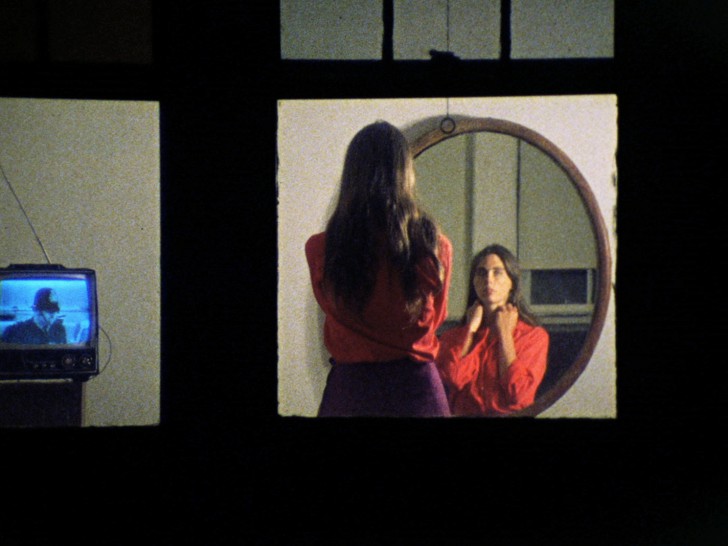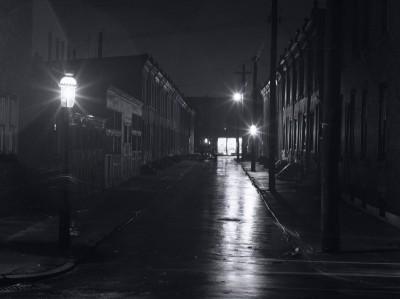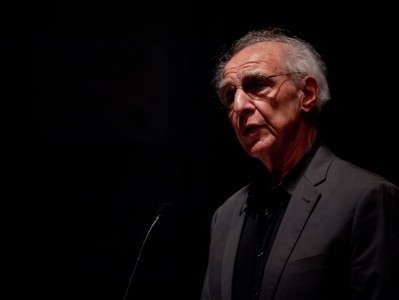
Alfred Guzzetti - Program Three
Guzzetti takes the pulse of a certain cross-section of the American left in the early 1970s and comes up with a complex portrait of a time that Scott MacDonald has described as “both exhilarating and frightening.” For example, calm, elegant pans are accompanied by radio reports on political torture. The elaborate soundtrack often juxtaposes two voices, one in each channel, while a collage of documentary footage shot on the streets of Cambridge and Boston alternates with staged moments and with tender portraits of Guzzetti’s friends.
-
Evidence
Directed by Alfred Guzzetti.
US, 1972, 16mm, color, 16 min.
Print source: filmmaker
If Air is the portrait of a group of people in a specific place, Evidence expands to include the whole US. During a cross-country road trip with Richard Rogers, Guzzetti placed mounts on the car, so the camera could fasten securely to either the front fender or the passenger door. He paired the resulting footage with music and recordings from the car radio to provide a snapshot of the nation in the turbulent early 1970s.
The first in Guzzetti’s “Language Lessons” video cycle, Rosetta Stone may provide a kind of key to the others, including The Curve of the World, if only through its scrolling mantra, “Within a short time, all knowledge and consciousness of this form of writing was lost.” New screens materialize inside the central screen; they may be windows or mirrors or both. Guzzetti’s multiple dialects intersect yet do not appear to actually touch, while all things solid seem held together by motion and the vacillations of memory and interpretation.
The moving image allows Guzzetti to follow simultaneous, separate paths—some through the cryptic metaphor of dream, some through ordinary reality, others purely emotional and abstract. The paths are also territorial demarcations: flags, borders, the Berlin Wall, the edge of the earth, the work of art. These may be precise boundaries yet they are sometimes invisible, often ephemeral. They mark the difference between inside and outside, synthetic and natural, past and present, experience and memory.
An elliptical journey through China, but which China, whose China? The China of the imagination, of memory, of dream, of mediated culture? Serene rural landscapes alternate with the clang of city life as Guzzetti’s rippling, rhythmic structure displaces and disorients while holding onto certain constants, such as movement, change and the moon.
A return to Guzzetti family history grows out of photographs taken by the filmmaker’s father, and one street scene in particular. This film/video essay about the tension between still photography and the passage of time revisits not only the 1930s but also the 1970s, during the making of Family Portrait Sittings. Ultimately, Guzzetti’s musings spiral out from one photograph to a moving consideration of the mysteries of existence.













